
Small subunits can determine enzyme kinetics of tobacco Rubisco expressed in Escherichia coli (Nature Plants)
Plant Science Research Weekly
Rubisco is the enzyme responsible for the fixation of CO2 to ribulose-1,5-bisphosphate (RuBP) during photosynthetic reactions. However, this enzyme has some functional issues, such as a slow catalytic turnover rate and sensitivity to temperature and CO2, and it catalyzes a competing oxygenation process…
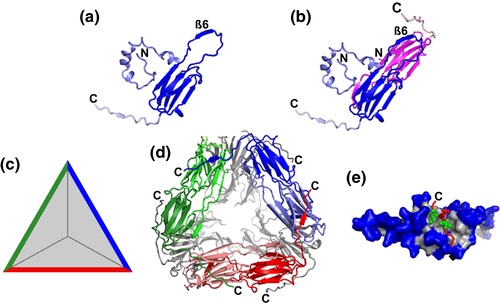
Review: Plant small heat shock proteins – evolutionary and functional diversity (New Phytol.)
Plant Science Research WeeklyHeat shock proteins are rapidly induced by heat treatment and were among the first plant genes and proteins characterized in the early days of molecular biology, nearly 40 years ago. Waters and Vierling review the family of small heat shock proteins (sHSPs), which has been especially amplified in plants…
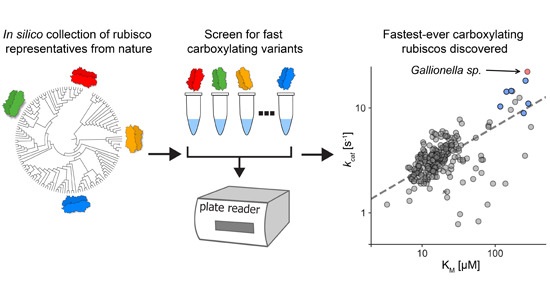
Highly active rubiscos discovered by systematic interrogation of natural sequence diversity (EMBO J)
Plant Science Research WeeklyThis is a fascinating and very well-written paper that investigates the diversity of rubisco's kinetic properties. Rubisco’s relationship with its substrate CO2 is complicated by its relationship with O2, and it has often been suggested that for this reason rubisco is locked into a slow rate of catalysis.…
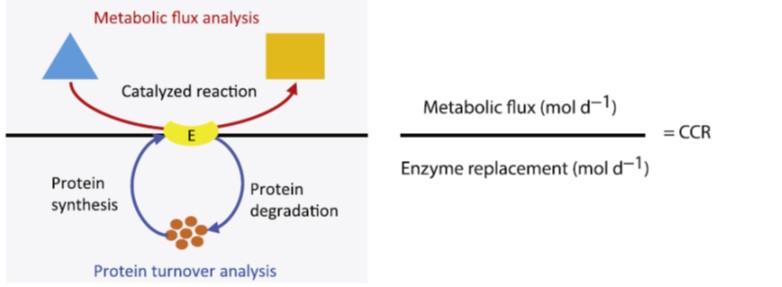
Review: Enzymes as parts in need of replacement – and how to extend their working life (Trends Plant Sci)
Plant Science Research WeeklyThe ability of biological systems to self-repair is a huge motivator in all sorts of synthetic biology projects. Taking this cell-as-factory to the next step comes the question of how often do the parts need replacing? Tivendale et al. address this through a discussion of Catalytic Cycles until Replacement…
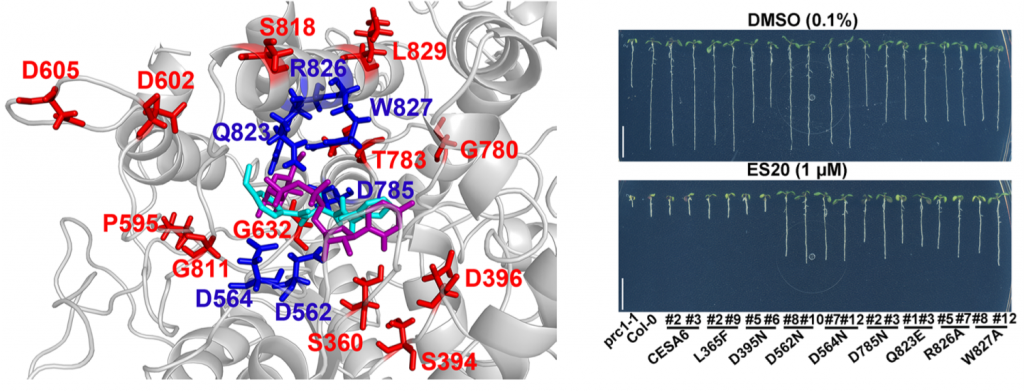
Endosidin20 targets the cellulose synthase catalytic domain to inhibit cellulose biosynthesis (Plant Cell)
Plant Science Research WeeklyCellulose is an indispensable component of plant cell wall formation. Cellulose is synthesized at the plasma membrane by a cellulose synthase complex (CSC) made up of at least 18 monomeric cellulose synthases (CESAs). In this study, Huang et al. used a chemical genetic approach to explore the structure…
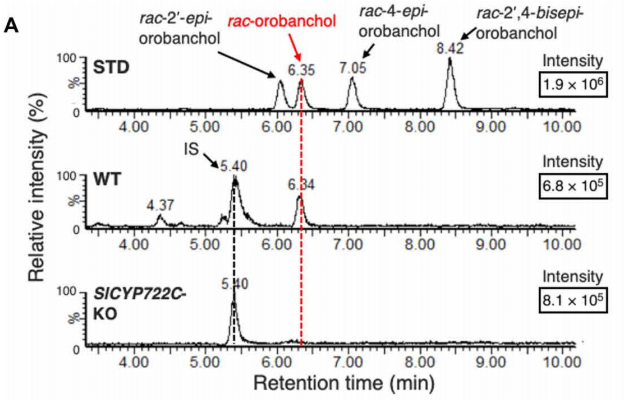
Direct conversion of carlactonoic acid to orobanchol by cytochrome P450 CYP722C in strigolactone biosynthesis
Plant Science Research Weekly
Strigolactones (SL) are a compounds that play important roles as phytohormones and as a rhizosphere signaling. Despite the great advances in their research that occurred recently, their biosynthetic pathway is still not well understood. Until now, the pathway leading to the precursor carlactonic…
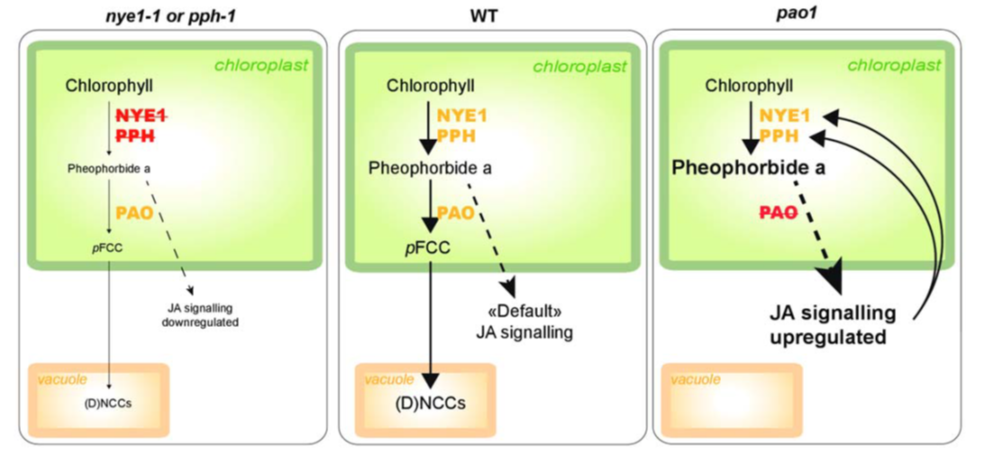
Pheophorbide a may regulate jasmonate signaling during dark-induced senescence
Plant Science Research Weekly
During leaf senescence, nitrogen-rich chlorophyll is broken down through a regulated process so that nitrogen-containing compounds can be reassimilated into the plant body. Chlorophyll catabolites are sequestered in the vacuole as linear tetrapyrroles known as phyllobilins, produced through the action…
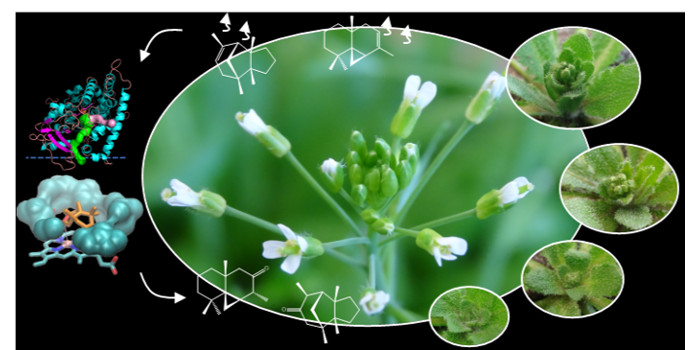
Attractive flower smell turned into defense barrier
Research, The Plant Cell, The Plant Cell: In a NutshellBoachon et al. explore metabolic processes associated with floral defense.
Plant Cell https://doi.org/10.1105/tpc.19.00320
By Benoît Boachon, University of Lyon, UJM-Saint-Etienne, CNRS, BVpam FRE 3727, Saint-Etienne, France.
Danièle Werck-Reichhart, Institute of Plant Molecular Biology of…
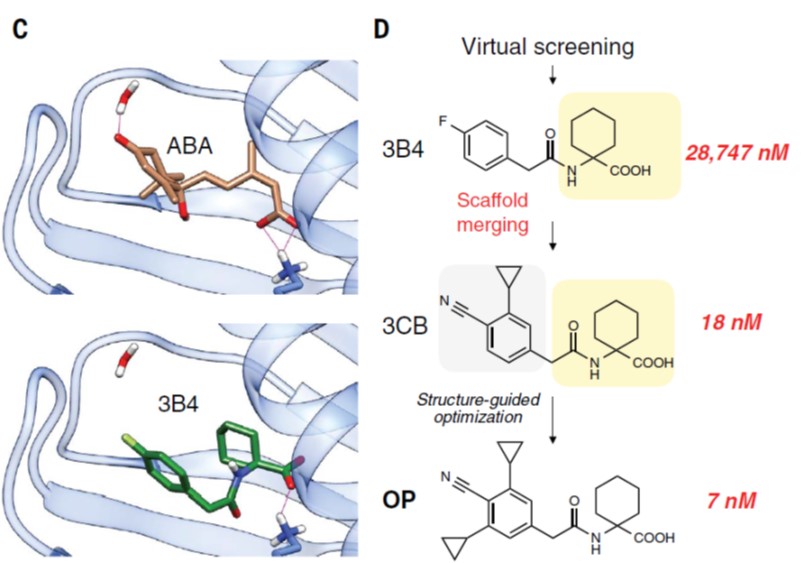
Dynamic control of plant water use using designed ABA receptor agonists (Science)
Plant Science Research WeeklyABA is synthesized in response to water stress and promotes stomatal closure, thus decreasing transpiration. Crop yields can be increased by controlling transpiration early in the growing season, ensuring that soil water resources persist through the seed-set period. Building upon earlier studies, Vaidya,…

